The truth about Jason Dark
As you probably know by now, my Jason Dark mysteries are about a homeless Leprechaun who lays golden eggs and throws rainbows at people to make them go shave their heads so they can learn to inhale soup instead of eating it…
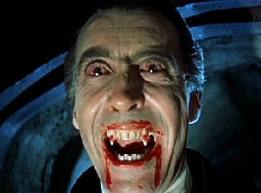 I’m just kidding, of course. I couldn’t fool anyone into believing that, but even though you know what my books are not about, it appears to me that many of you don’t really know exactly what they are about. So allow me to tell you a little more about one of my true works of passion.
I’m just kidding, of course. I couldn’t fool anyone into believing that, but even though you know what my books are not about, it appears to me that many of you don’t really know exactly what they are about. So allow me to tell you a little more about one of my true works of passion.
When I grew up in Germany, horror movies were a rare commodity. Age limitations, which were rigorously enforced in those days, prevented me from going to see the latest bloodfests in theaters and the only way for me to experience horror movies were Saturday late night showings of classic horror films on TV. As a result, whenever a movie like “Horror of Dracula” was scheduled, that day was a veritable holiday for me. Even though I am dating myself now, please remember that this was in the days before home video or cable TV. Yes, such a time existed, in the not too distant past, actually.
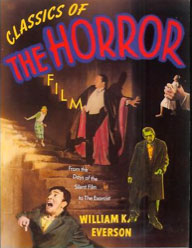 Combined with horror literature, this was the only way for me to experience horror in those days. I would pour over William K. Everson’s “Classics of the Horror Film” with its countless still photographs for endless hours, reading about the innumerable horror films I had never seen and those I had watched. The book was to me what the bible is to Catholics.
Combined with horror literature, this was the only way for me to experience horror in those days. I would pour over William K. Everson’s “Classics of the Horror Film” with its countless still photographs for endless hours, reading about the innumerable horror films I had never seen and those I had watched. The book was to me what the bible is to Catholics.
As a result I developed a deep and lasting love for classic horror movies — the great monster movies of Universal’s golden era, the German expressionist films by Murnau and Lang, the stylish films of Val Lewton, the work of Mario Bava, Roger Corman’s Poe-adaptations, Boris Karloff’s body of work and above all, the masterfully atmospheric Hammer Horror films. I literally ate these movies up and there is a really good chance that I could probably bore you to death with trivia details about films from that era.
This love for the classics of the genre has never abated and it was the forge in which the creation of Jason Dark, the hero of the many supernatural mysteries stories I have written, was shaped. But it actually goes a long way beyond that.
My love for detective stories and thrillers plays into this as well, along with a long-standing faible for a certain German dime novel series and my fascination with history.
When I began writing the first Jason Dark mystery, “Demon’s Night” I wanted to create something that has the intrigue of a detective story, the mystery of a classic horror movie, the emotional roller-coaster and action of a thriller and a dash of history.
But I can hear you — enough with the background, already, how did it turn out? What exactly can I expect from your books?
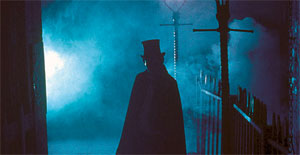 The Jason Dark mysteries are supernatural mysteries, period pieces, playing in Victorian England. To me the Victorian era is simply magical and the epitome of classic horror. I mean, look at the truly iconic monsters — Dracula, the Wolf Man, the Mummy, Dr. Jekyll, Jack the Ripper… they are all creatures of the Victorian era. Even Edgar Allan Poe’s stories are mostly taking place during early Victorian times. For that reason I picked Victorian England as the backdrop for the Jason Dark books, and London, in particular, is the scene for many of the adventures, with its fog-shrouded nights and cobble-stone streets. Think of it as Sherlock Holmes on steroids, a super-sleuth fighting demons and monsters.
The Jason Dark mysteries are supernatural mysteries, period pieces, playing in Victorian England. To me the Victorian era is simply magical and the epitome of classic horror. I mean, look at the truly iconic monsters — Dracula, the Wolf Man, the Mummy, Dr. Jekyll, Jack the Ripper… they are all creatures of the Victorian era. Even Edgar Allan Poe’s stories are mostly taking place during early Victorian times. For that reason I picked Victorian England as the backdrop for the Jason Dark books, and London, in particular, is the scene for many of the adventures, with its fog-shrouded nights and cobble-stone streets. Think of it as Sherlock Holmes on steroids, a super-sleuth fighting demons and monsters.
But there’s a lot more to it. Steampunk elements create an alternate world almost, in which Dark and his friends come up with magnificent inventions to track down evil.
Unlike modern day horror, the stories are not overly gruesome or gory. They use atmosphere to set the mood and give you shivers. I’m not a big fan of urban horror or splatter and to me it has always been much more fascinating to suggest horror rather than to explicitly show it. Nonetheless, there is plenty of blood in the stories to firmly place the adventures into the horror realm, but to me it is the traditional “gothic horror” of old rather than the cold, modern horror many people associate with the genre nowadays.
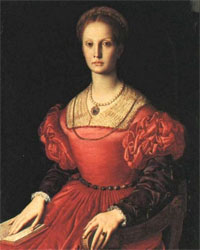 The real spice in the stories, however, are the countless historic and literary references. It is hard for me to talk about these without spoiling the fun but you will find many, many names, locations and events that are rooted in actual history or are taken from literature. Don’t be surprised to stumble across people like Inspector Lestrade in a Jason Dark book, or square off with someone like the Countess Elizabeth Báthory, a notorious serial killer who killed over 600 people — I am not making this up. She was real!
The real spice in the stories, however, are the countless historic and literary references. It is hard for me to talk about these without spoiling the fun but you will find many, many names, locations and events that are rooted in actual history or are taken from literature. Don’t be surprised to stumble across people like Inspector Lestrade in a Jason Dark book, or square off with someone like the Countess Elizabeth Báthory, a notorious serial killer who killed over 600 people — I am not making this up. She was real!
There are tiny little breadcrumbs in every one of the books that readers can discover and even though each story is standing entirely on its own, when you read the books as a series, you will see how certain names and events actually lead up to others, how there is a recurring cast, how there are villains that just can’t be kept down, how there are world events that play in the overall narrative.
 The best thing I could probably compare the Jason Dark books to is probably Stephen Sommers’ 2004 movie “Van Helsing.” While purist horror fans may have wrinkled their noses at it, the fact of the matter is that it was a jolly good romp with great visuals, fun characters and action to boot. In many ways that is what my Jason Dark books are about, too, while always making sure not to take themselves too seriously.
The best thing I could probably compare the Jason Dark books to is probably Stephen Sommers’ 2004 movie “Van Helsing.” While purist horror fans may have wrinkled their noses at it, the fact of the matter is that it was a jolly good romp with great visuals, fun characters and action to boot. In many ways that is what my Jason Dark books are about, too, while always making sure not to take themselves too seriously.
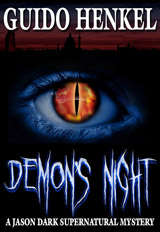 So, if you feel like this might actually be something that you would enjoy, feel free to head over to Amazon and grab a copy of
So, if you feel like this might actually be something that you would enjoy, feel free to head over to Amazon and grab a copy of
“Demon’s Night” for only 99 cents and give it a try. What do you have to lose, really? It’s less than a buck, less than a cup of Joe, less than a pack of gum… I mean, why not? If you’ve read this far in this blog post you’re obviously somewhat fascinated by the kind of books they are. I am pretty sure you’ll get some enjoyment out of it.

I have purchased and am in the middle of reading “Demon’s Night” now. So far, so good. You are a very visual writer. Now that you’ve mentioned it, one can see the influence of those old horror movies in your writing. My two guilty favorites from that period are the Hammer “Brides of Dracula” from 1960 (which had a surprising plot twist, actually rather shocking if you think it through), and “The Phantom of the Opera” from 1962 (the one with Herbert Lom). You have now made me curious about the “Van Helsing” movie. I passed on it when it first came out because I wasn’t sure about it, but now I want to rent it and see how it is.
Guido,
The description of your book makes it sound much more appealing. The Van Helsing comparison also makes me go, “Oh, okay, sounds good.”
This may be a advantage of your blog –the ability to go beyond the book blurb and thumbnail to better explain your offerings.
You could make the argument that it has elements of steampunk. In our first introduction to Jason Dark, Dark’s laboratory has “gadgets he had built over the years were like nothing anyone had ever seen.”
Steampunk?
I think so …
Barry,
The deeper you get into the series, there are definitely Steampunk influences. Not necessarily so overtly that I would like to stamp the series as Steampunk stories, but the influences are definitely there. Jason’s friend Herbert makes sure of that. 🙂
I occasionally dash off, here and there, to check out the various web sites that you write for, and in the “Fangoria” magazine article about you, they say that Jason Dark is “…as much MacGyver as he is Sherlock Holmes and Martin Quatermass….” Correct me if I’m wrong: isn’t the first name of Professor Quatermass “Bernard”?
I guess you fond an error there. “Martin Quatermass” is actually one of the pseudonyms writer/director John Carpenter used in some of his films to disguise the fact that he did most of the work himself. Loos like someone at Fango simply got the wrong name in their head, though I appreciate either. 🙂
I got the book “Classics of the Horror Film” from the library today. Lot’s of historical goodies there!
The books is a righteous treasure trove. I still have my original German copy of it and every once in a while I’ll browse through it just for inspiration. Does the US version really feature colorized images? In my German version, all the photographs are black and white.
No, all the pictures in this one are in black-and-white also. I found the 1974 edition, which probably has the same content as the one that you show above (i.e. “From the days of the Silent Film to The Exorcist”) but this one has a mostly-purple cover with bad typography that really looks like it is from 1974.
I found your blog thru your Konrath post, too, although I’m not a writer. I’m one who just didn’t like your old covers or the descriptions in Amazon (so cheesy it lost its appeal) so I didn’t purchase, but this post makes me at least want to try the sample of Demon’s Night. I liked Van Helsing and the description as a paranormal Sherlock Holmes is intriguing. Now the only barrier for me will be length. I think novellas should only be 99 cents. Even if I like the first one I’m not likely to go to book 2 if the price is higher since there are so many of them. For $2.99 I expect 275+ pages and I know I’m not the only one who feels this way. You might want to try bundling in 3’s for $2.99.
Sandy, thanks for the feedback, and while I understand the people want to save money, quite honestly, a $2.99 price point is absolutely justifiable in my opinion. Of course, everyone has a different ruler they apply, but to me 99 cents is okay for a short story, $2.99 is okay for a novella and $4.99 should be the price of a novel. None of it is excessive by any means. Think about it, the last time you could buy a novel for $4.99 was back in the 70s or so. I mean, what other commodity items can you get for $2.99 these days?
But sure, I understand where you’re coming from.
I get where you’re coming from as a writer, but as a reader I can get good novel-length ebooks for lower prices so I’m not exactly being pushed to the higher price points yet. Plus, I read a LOT so believe me, I’m spending the money, just not so much on single titles.
I guess that’s the race to the bottom so many authors are afraid of, but as a reader I kind of love it. I hope it will push authors to get a broader/larger audience for more sales at a lower price rather than a smaller audience with a higher price point for fewer sales. I would think value would be total revenue vs product price, but I’m not an author so I don’t know.
I wish you luck, though and love the new covers.
Hey Guido,
I just made Demon’s Night my first Kindle purchase. I enjoyed the sample and I am looking forward to reading the rest.
I have the piece for my blog written on formatting your story, and it will contain a link to your helpful guide, as well as a couple of plugs (for your new book and for the whole series). I will be suggesting to readers who find your blog useful to purchase one of your books to show their appreciation.
I am holding back on posting the piece until I format my own short stories. I get the final proof back from the editor on Monday/Tuesday, and it’s only 4,000 words and I know a bit of HTML, so it shouldn’t take me too long, and then I can post the blog. I will send you a link when it’s up, and maybe at some point in the future we can talk about a guest blog, if you are interested.
Dave
Thank you so much, David. I truly appreciate the plug and I hope you will enjoy “Demon’s Night” and hopefully some of the other stories, too.
For a guest post, just holler and we’ll take it from there.
Hey, Guido. I know this is an older post but I just got to it. Interesting to read about the inspiration for the Jason Dark series. I agree that there is something mysterious and evocative about the Victorian era. One thing, the painting you display is not actually Countess Elizabeth Báthory but Lucrezia Panciatichi, painted by one of my favorite Renaissance painters, Bronzino. But there is a Victorian tie with the painting: in Henry James’s The Wings of the Dove the main character is described as a near-identical twin of Lucrezia, whose portrait hangs in the home of an English lord that she meets. Also check out Bronzino’s Venus, Cupid, Folly and Time. There’s quite a bit of dark symbolism in that painting!
Best,
Michael
Thanks for the correction, Michael. I’ll have to check out those other paintings.